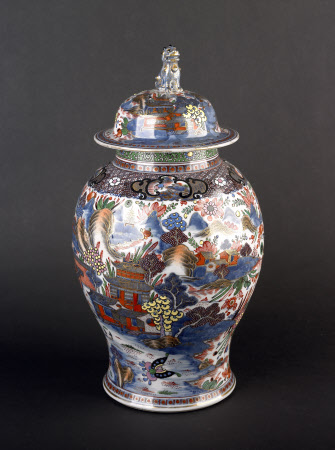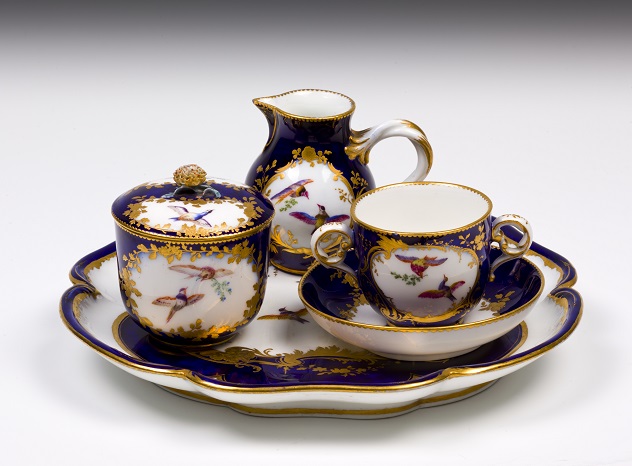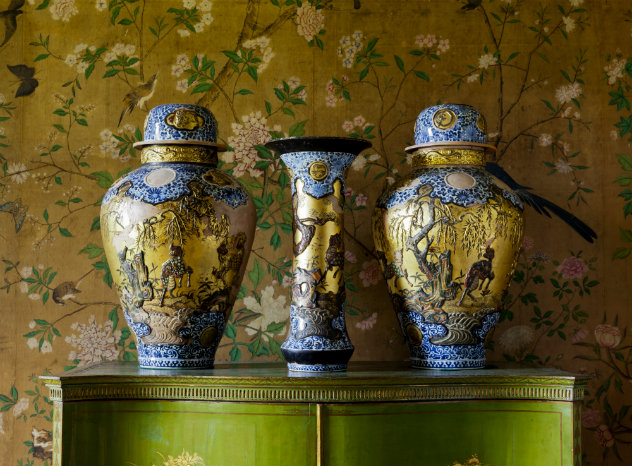Jar
Category
Ceramics
Date
1770 - 1780
Materials
Ceramic
Measurements
475 mm (Height); 179 mm (Diameter)
Place of origin
Jingdezhen
Order this imageCollection
The Argory, County Armagh
NT 563420.1
Summary
Jar and cover (later redecorated to form a five-piece garniture with 563413 and 563412), porcelain, of baluster shape, painted in cobalt blue under the glaze with a continuous landscape of figures in pavilions on rocky landscapes, around the shoulder is a dotted-cellwork border with cloud scrolls and landscape reserves, line bands, China, Jingdezhen, circa 1770. Later painted in polychrome enamels in opaque yellow, iron-red, green, black and gold with scattered insects and foliage infilling the white ground and enhancing the underglaze decoration, in England, possibly London, circa 1810-30. For a comparable blue and white example, painted with a landscape which later developed into the classic so-called ‘Willow’ pattern, see NT 730365.1-2 at Stourhead, Wiltshire, or NT 452435 at Dyrham Park, Gloucestershire. The five-piece garniture may match an entry for payment for ‘5 pieces of Oriental China, £23.20.00’ recorded on July 28, 1828, in an Account Book, 1826–29, among the household papers relating to Drumsill and The Argory owned by Walter MacGeough Bond (1790-1866) (Public Record Office for Northern Ireland (PRONI) D288/E/1). This is a considerable amount of money, as on the same date was a payment for a ‘China service from Mrs. Child 42.00.00’. This type of redecoration considered an improvement was also known as ‘clobbered’. It was an eccentric taste fashionable among the wealthy gentry in the early 19th century, presumably when blue and white was out-of-fashion. Even late Ming export wares were redecorated as can be seen on examples at Ickworth, Suffolk, NT 848751. The fashion might be equated with the Brighton Pavilion taste for colourful exotic chinoiseries favoured by George IV as Prince Regent. Frederick Litchfield in 'Antiques Genuine and Spurious, an Art Experts Recollections and Cautions', London, 1921 (p. 43), noted that Sir Robert Peel, 2nd bt (1788-1850), placed a duty upon imported porcelain, allowing blue and white to enter duty free or for less duty than polychrome pieces and that the work was done by up until the 1840s by a man called Unsworth who carried on business at Hanway Yard' (behind Oxford Street at Tottenham Court Road, where Litchfield had his curiosity shop). Patricia Ferguson, 2014 Previous attribution: Covered jar. Blue, gold, green. The vase blue and white, 18th C. The coloured decoration probably Delft c1820.


